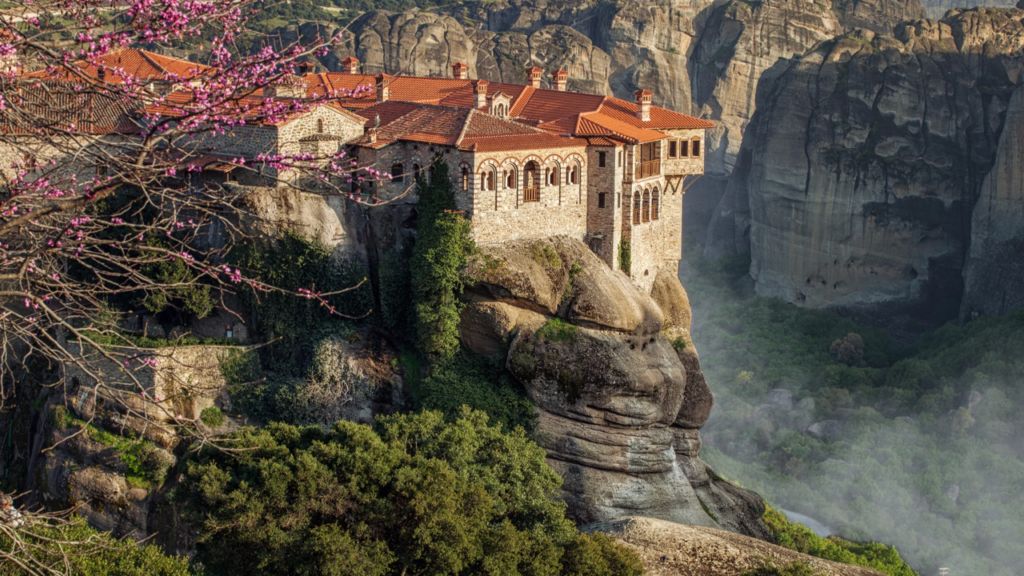
Meteora is one of the most important geological monuments of Greece. It is a complex of impressive rock formations, with a height of up to 200 m and a width that varies, and in some places, reaches up to 300 m. On the top of many of these rocks, Byzantine monasteries were built, 6 of which are even functioning today. Meteora was declared a UNESCO World Heritage Site in 1988.
From a geological point of view, Meteora is composed of molasse sediments belonging to the Middle Hellenic Trench, a huge sea basin that started from the geographical area of today’s Thessaly and reached all the way to today’s Albania. It was at least 200 kilometers long and 30-40 kilometers wide. On both sides of this narrow sea basin, mountain ranges emerged that are identical to the present-day morphology. To the west, there is the mountain range of Pindos, and, to the east, the mountains Vermio, Askio, Vourinos, and Vouniasa. The large rivers that flowed into this sea eroded the aforementioned mountains, and transported and deposited large quantities of materials for millions of years.
About 5 million years ago, the area begins to rise, and small and large lakes appear in the sea area. The uplift movements that were constantly taking place resulted in the appearance of land areas. Later and when most of the area of today’s Thessaly turned into dry land, strong tectonic movements create a multitude of faults in the area. These faults will determine the creation of the Pinios River and its tributaries and which will eventually drain the last remaining lakes through Tempe into the Aegean Sea, which has already begun to form.
These rivers will also contribute to the erosion of the emerging area and the creation of many narrow valleys. The multitude of these valleys combined with the extreme weather conditions that prevail thereafter with the alternation of cold and warm periods is the cause of the impressive Meteora relief.
The temperature changes of the water that penetrates the rocks as well as the root system of plants, changing from ice to liquid, is the main factor of the local weathering of the rocks. The strong air currents that prevailed in the area had a great contribution to this disintegration. The phenomena of erosion both due to water and due to strong winds sculpted the rocks of Meteora.


